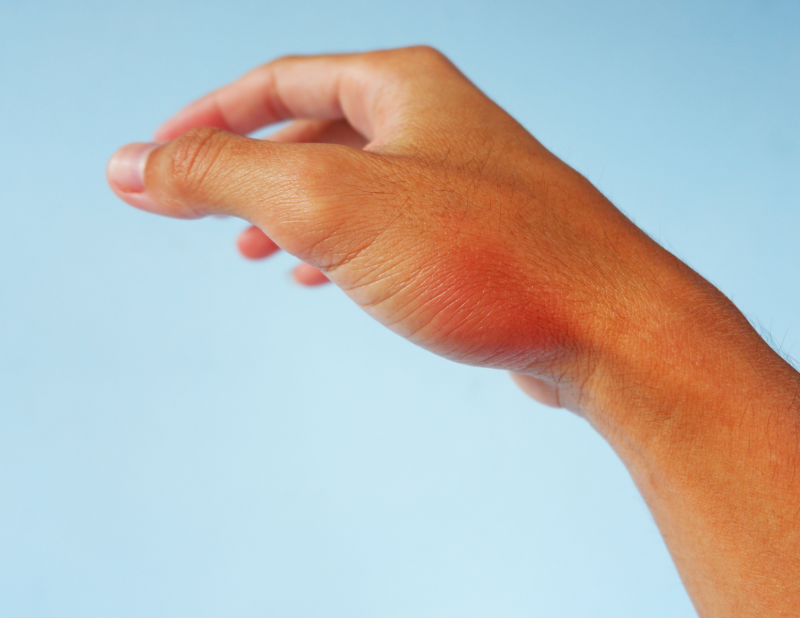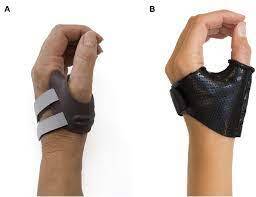Arthritis in hands and wrists
Arthritis is a condition where the joints get inflamed which causes pain, stiffness and sometimes deformity. There are different types of arthritis that can affect hands and wrists but Osteoarthritis and Rheumatoid arthritis would the 2 most common types that we see in our clinic. For detailed description of the different types of arthritis you can look at our Arthritis page on our website.
In Perfect Therapy Clinic we are uniquely equipped to help most of the arthritis sufferers with managing their symptoms. As one of the very few clinics in Ireland we use hydrotherapy baths in conjunction with other treatments to help treat the symptoms and improve the function of your arthritic hands. We see patients for conservative (non-surgical) treatment of arthritis and also clients post-surgery. The treatment options in our clinic include:
- hydrotherapy to alleviate pain, swelling and stiffness
- splinting or advise on suitable over the counter support/ brace to support and protect the affected joints
- tailored exercise programmes to safely maintain or increase range of movement, stability and strength. We also use SARAH (Strengthening and Stretching for Rheumatoid Arthritis of the Hand) exercise program which is a 12 weeks progressive exercise program to improve strength, mobility and function specifically for hand and wrist affected by rheumatoid arthritis
- functional activities to restore dexterity and fine motor skills
- joint protection advise to change the way you are used to do things in order to protect the joint from more damage and to decrease the pain
- joint mobilisation to ease the stiffness and increase the range of movement
- paraffin wax bath treatment to decrease stiffness, swelling and pain
- massage and myofascial release to further assist with the pain and stiffness management
- kinesiotaping for swelling or support for unstable joint
Differences between osteoarthritis and rheumatoid arthritis in hands and wrists
Both Osteoarthritis and Rheumatoid arthritis commonly affect hands and wrists. Whilst they both can present with a degree of pain and stiffness, there are certain differences between the symptoms of each condition.
Your medical professional can diagnose Osteoarthritis relatively easily by taking your history and by physical examination, blood tests are usually not necessary; X-ray can confirm the diagnosis and reveal the extent of the osteoarthritis.
Rheumatoid arthritis can be diagnosed as well by taking the history of the symptoms and physical examination, the blod tests would usually confirm the diagnosis as well as the X-rays.
Treatment of osteoarthritis in hand and wrist
The aim of the treatment for osteoarthritis in your hand or wrist is to decrease the pain and stiffness, regain or maintain the range of movement, strength and function in your hands. Osteoarthritis is usually treated with medication (anti-inflammatories in form of tablets or as topical gels and creams occasionally steroid injections), physiotherapy, occupational therapy, physical therapy and modification of activities / joint protection. If the symptoms can not be managed by these means you might need a surgery. The most common surgeries for osteoarthritis in hand and wrist are joint fusion (arthrodesis) and joint replacements. There are also various surgical procedures for thumb osteoarthritis - we will discuss these in the next section.
Hand therapy plays a big part in treatment of osteoarthritis of hands and wrist. It is crucial for regaining the movement and strength and also to decrease pain, stiffness and swelling.
osteoarthritis of the thumb
The osteoarthritis of the thumb affects the base of the thumb where the thumb bone meets one of the wrist bones - this joint is called carpometacarpal joint / CMC joint. The CMC joint enables the thumb to move in several planes and allows for opposition which is crucial for our dexterity.
The CMC arthritis is caused by wear and tear in this joint and it usually affects women over 40. The main symptoms are tenderness, swelling and stiffness at the base of the thumb, weakness when gripping, squeezing and twisting, and in later stages deformity of the thumb limiting the overall use of hand even further.
The treatment of arthritis in the thumb is similar to treatment of the arthritis in the rest of the hand; medication, steroid injections, splinting and bracing, physiotherapy, occupational therapy, joint protection. As the CMC joint is heavily stressed and overloaded joint conservative treatment might not always be enough and surgery might be necessary to improve function and/or to ease the pain. The best surgical option will depend on how severe are the symptoms & how far has the disease progressed. The most common procedures are:
- ligament reconstruction - to stabilise the thumb
- trapeziectomy - which means removing the affected wrist bone called trapezium and replacing it with an implant (e.g. pyrocardan / pyrocarbon implant) or with a tendon from your wrist
- arthroplasty - joint replacement
- osteotomy - the metacarpal bone (the thumb bone closest to the wrist) is cut and realigned to improve deformity
- fusion - when the bones in the joint are fused together so that the joint doesn't move







